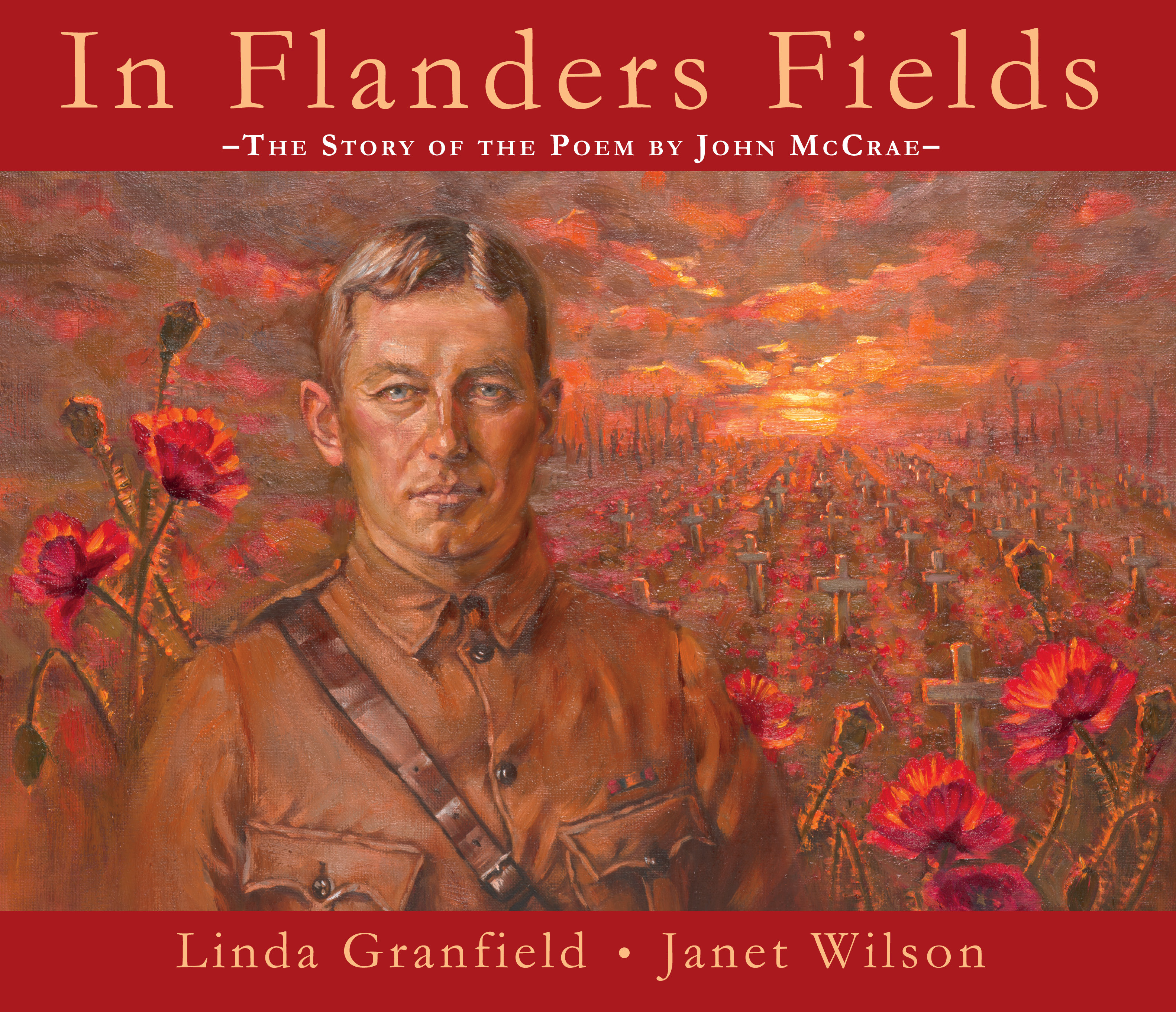| ________________
CM . . .
. Volume XXI Number 22. . . .February 13, 2015
excerpt:
This re-released nonfiction book (glossy new cover art and a two page introduction by Dr. Tim Cook) contains the original text and maps from the 1995 edition. The book begins with the handwritten poem, “In Flanders Fields”, by John McCrae. On the following page, historian and author Linda Granfield (Where Poppies Grow: A World War I Companion) provides some background about McCrae’s time in the First World War and what was happening in May 1915, in Flanders when he wrote the poem. The poem is then illustrated by Wilson for a few pages (full page spreads, one line per page) before Granfield inclusion of four pages of information about the origins of World War I and facts about McCrae’s ancestors. These pages incorporate black and white drawings and photographs, and quotes from McCrae’s letters. She describes what the soldiers ate during the war, and what they did when they were not fighting the war. The book continues with painterly scenes of the poem, background details about the publication of the poem, and how poppies became the “symbol of remembrance”. Back material includes a page of captions for the artwork, and a black and white double page spread map of Europe in 1915 (similar to the endpapers in the 1995 edition). Because the book includes nonfiction and the poem, In Flanders Fields: The Story of the Poem by John McCrae can be introduced to a wide age range of children. No library should be without this book. Highly Recommended. Tanya Boudreau is a librarian at the Cold Lake Public Library in Cold Lake, AB.
To comment
on this title or this review, send mail to cm@umanitoba.ca.
Copyright © the Manitoba Library Association. Reproduction for personal
use is permitted only if this copyright notice is maintained. Any
other reproduction is prohibited without permission.
Next Review |
Table of Contents for This Issue
- February 13, 2015. |
